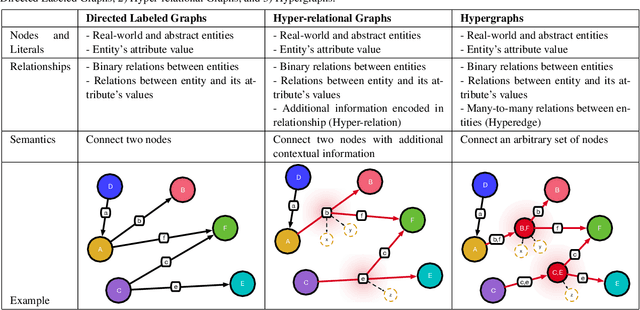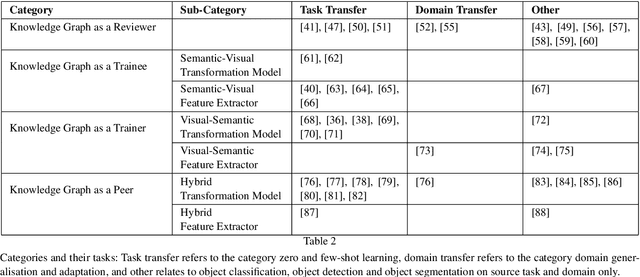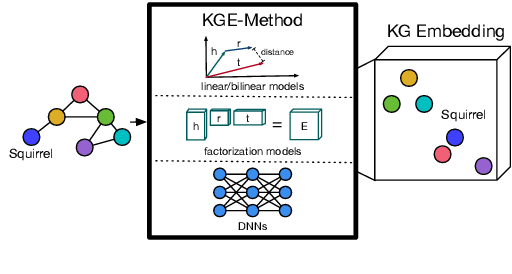A Survey on Visual Transfer Learning using Knowledge Graphs
Paper and Code
Jan 27, 2022



Recent approaches of computer vision utilize deep learning methods as they perform quite well if training and testing domains follow the same underlying data distribution. However, it has been shown that minor variations in the images that occur when using these methods in the real world can lead to unpredictable errors. Transfer learning is the area of machine learning that tries to prevent these errors. Especially, approaches that augment image data using auxiliary knowledge encoded in language embeddings or knowledge graphs (KGs) have achieved promising results in recent years. This survey focuses on visual transfer learning approaches using KGs. KGs can represent auxiliary knowledge either in an underlying graph-structured schema or in a vector-based knowledge graph embedding. Intending to enable the reader to solve visual transfer learning problems with the help of specific KG-DL configurations we start with a description of relevant modeling structures of a KG of various expressions, such as directed labeled graphs, hypergraphs, and hyper-relational graphs. We explain the notion of feature extractor, while specifically referring to visual and semantic features. We provide a broad overview of knowledge graph embedding methods and describe several joint training objectives suitable to combine them with high dimensional visual embeddings. The main section introduces four different categories on how a KG can be combined with a DL pipeline: 1) Knowledge Graph as a Reviewer; 2) Knowledge Graph as a Trainee; 3) Knowledge Graph as a Trainer; and 4) Knowledge Graph as a Peer. To help researchers find evaluation benchmarks, we provide an overview of generic KGs and a set of image processing datasets and benchmarks including various types of auxiliary knowledge. Last, we summarize related surveys and give an outlook about challenges and open issues for future research.
 Add to Chrome
Add to Chrome Add to Firefox
Add to Firefox Add to Edge
Add to Edge